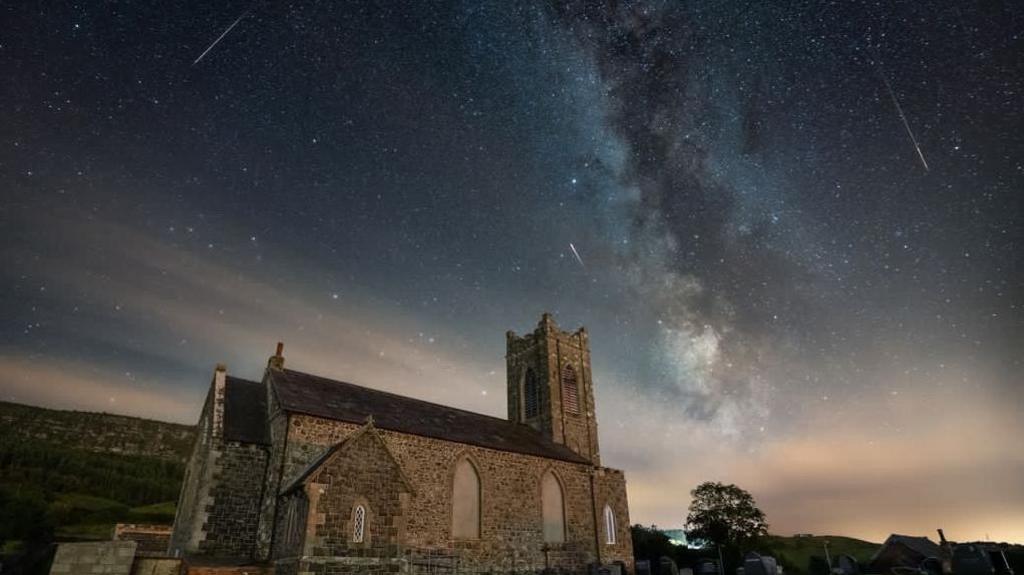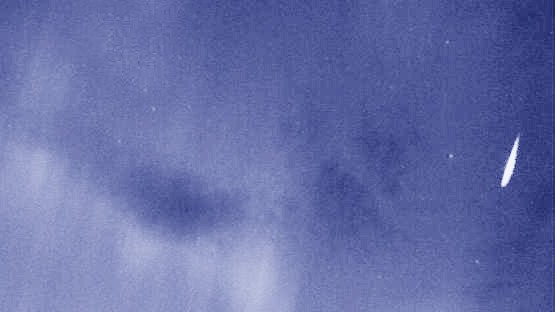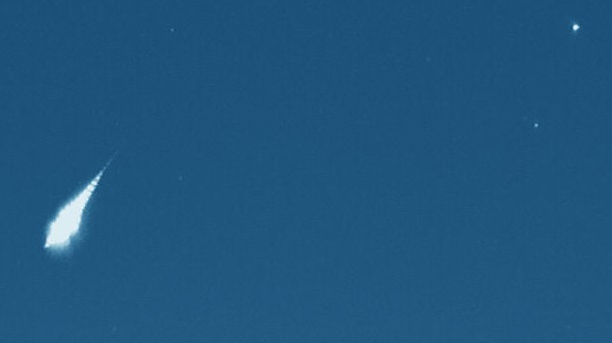Meteor shower to offer stargazers a summer treat

Perseid meteor showers are famous for bringing fireballs, bright colours and long meteor tails to the night sky, as seen in Limavady in 2021
- Published
Stargazers across Ireland and Great Britain are in for a celestial treat as the annual Perseid meteor shower is expected to peak this weekend.
The dazzling display is renowned as one of the most spectacular meteor showers of the year.
They happen typically between 27 July and 23 August.
This year, the peak occurs on 11 and 12 August.

Observers are advised to find a dark, open area away from city lights
During these peak times, skywatchers in dark locations can expect to see up to 100 meteors per hour, according to Astronomy Ireland.
Its chairman, David Moore, told BBC News NI: “This year’s Perseids promise to be especially remarkable, as there will be no interference from the moon.”
“This will ensure optimal viewing conditions for those hoping to catch a glimpse of the shooting stars.”
According to David, the meteors should be easy to see as “no special equipment is required to enjoy the show - just a clear view of the night sky and some patience”.
What is the meteor shower?
The Perseid meteors are fragments from Comet Swift-Tuttle, a distant comet that takes 130 years to orbit the Sun.
As Earth passes through the trail of debris left behind by the comet, tiny particles burn up upon entering our atmosphere, creating bright streaks of light that race across the sky.
Observers are advised to find a dark, open area away from city lights with the meteors visible throughout the night.

A full moon hampers viewing due to light pollution
Terry Moseley from the Irish Astronomical Association said: "Most burn away at a height of about 80-100km in the upper atmosphere, but bigger ones can penetrate a bit lower before finally burning up.
"Believe it or not, the brighter ones are only the size of a grape pip, and a really bright one would be only the size of a pea!"
However, conditions need to be ideal and will be different each year depending on the phase of the moon and of course the weather.

The showers are renowned as one of the most spectacular meteor showers of the year
A full moon hampers viewing due to light pollution and this year is only a quarter.
A bit bright at first but Terry Moseley said the moon will set later in the night and that will be the best time to view. So may be worth the wait.
Unfortunately, like with much of the summer, the weather isn't playing ball - the 11th and 12th August look unsettled.
For best viewing, wrap up, get a reclining chair to avoid neck strain and allow your eyes around 10 minutes to adjust to the night sky.
They are fast and sporadic so do not depend on getting the perfect snap.
Just enjoy if you get the chance.
What about the weather forecast?
There should be some viewing opportunities for a time on both Sunday and Monday nights.
However, data suggest the best viewing time on Sunday will be during the first half of the night before cloud and rain move in from the west.
Similar conditions are expected on Monday night, with the best of the clearer skies during the first half the night, into the early hours of Tuesday.